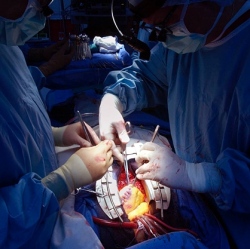
European researchers have announced a breakthrough in the development of artificial bone marrow which expands the ability of scientists to reproduce stem cells in the lab and could lead to increased availability of treatment for leukemia sufferers. A treatment for the blood cancer is injecting hematopoietic stem cells (HSCs).
These HSCs can either be harvested from a compatible donor or cultivated from the patient’s own bone marrow in the lab.
The greatest challenges in producing HSCs in the lab has been their limited longevity outside of the bone marrow environment. This problem may soon be circumvented with the creation of an artificial bone marrow by the Young Investigators Group for Stem Cell– Material Interactions.
Headed by Dr. Cornelia Lee-Thedieck the group consists of scientists from the KIT Institute of Functional Interfaces (IFG), the Max Planck Institute for Intelligent Systems, Stuttgart, and Tübingen University.
The cultivation of HSCs with current methods is limited as they quickly change into mature blood cells in culture in a process known as differentiation. HSCs are capable of developing into one of 10 different cell types. These mature cells are short lived and are not capable of self-renewal. HSCs, however, can continuously self-renew in healthy bone marrow. So the challenge facing researchers has been creating a surrogate for bone marrow in the lab which allows for the cultivation of HSCs.
Using macroporous hydrogel scaffolds the Young Investigators Group produced a substance that mimics the spongy structure of trabecular bone, the material within bone where bone marrow is held. To this hydrogel architecture a number of proteins found in bone marrow were added for the HSCs to bind to. Other conditions important for HSC self-renewal in trabecular bone were also created by adding mesenchymal stem cells (MSCs) from bone marrow and umbilical cord.
